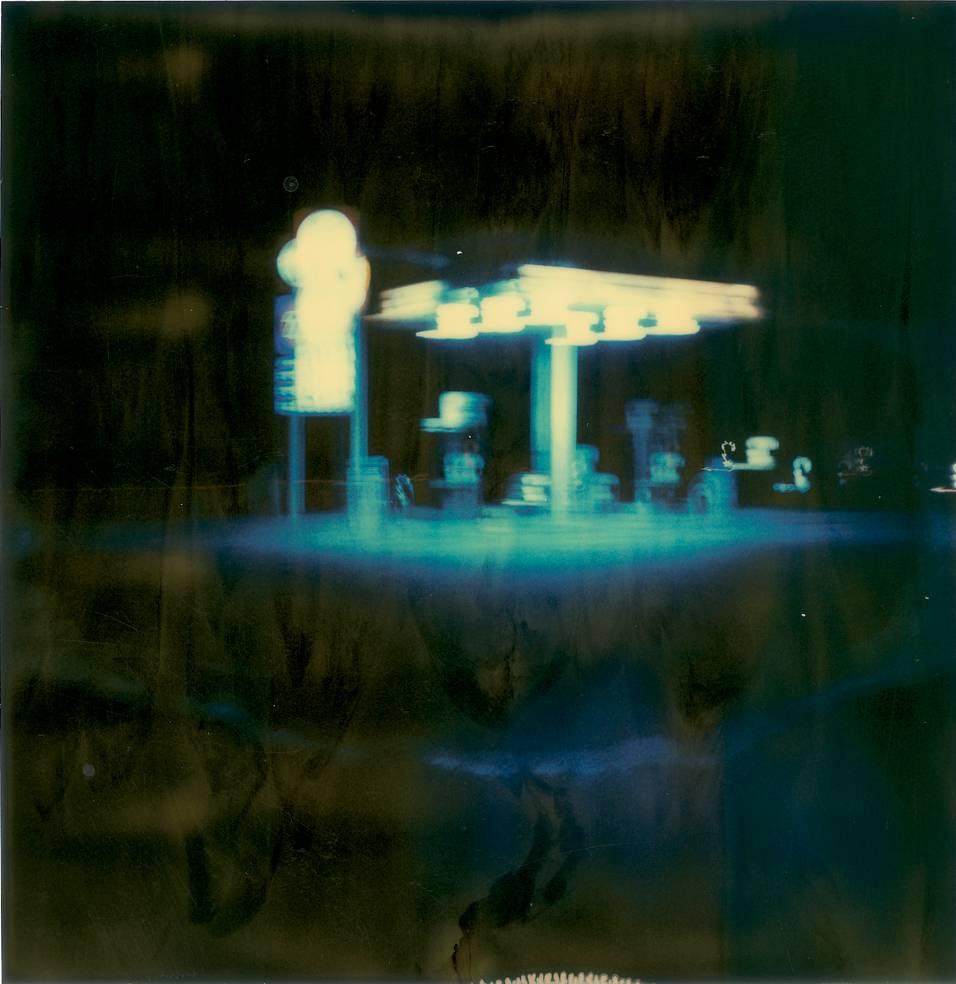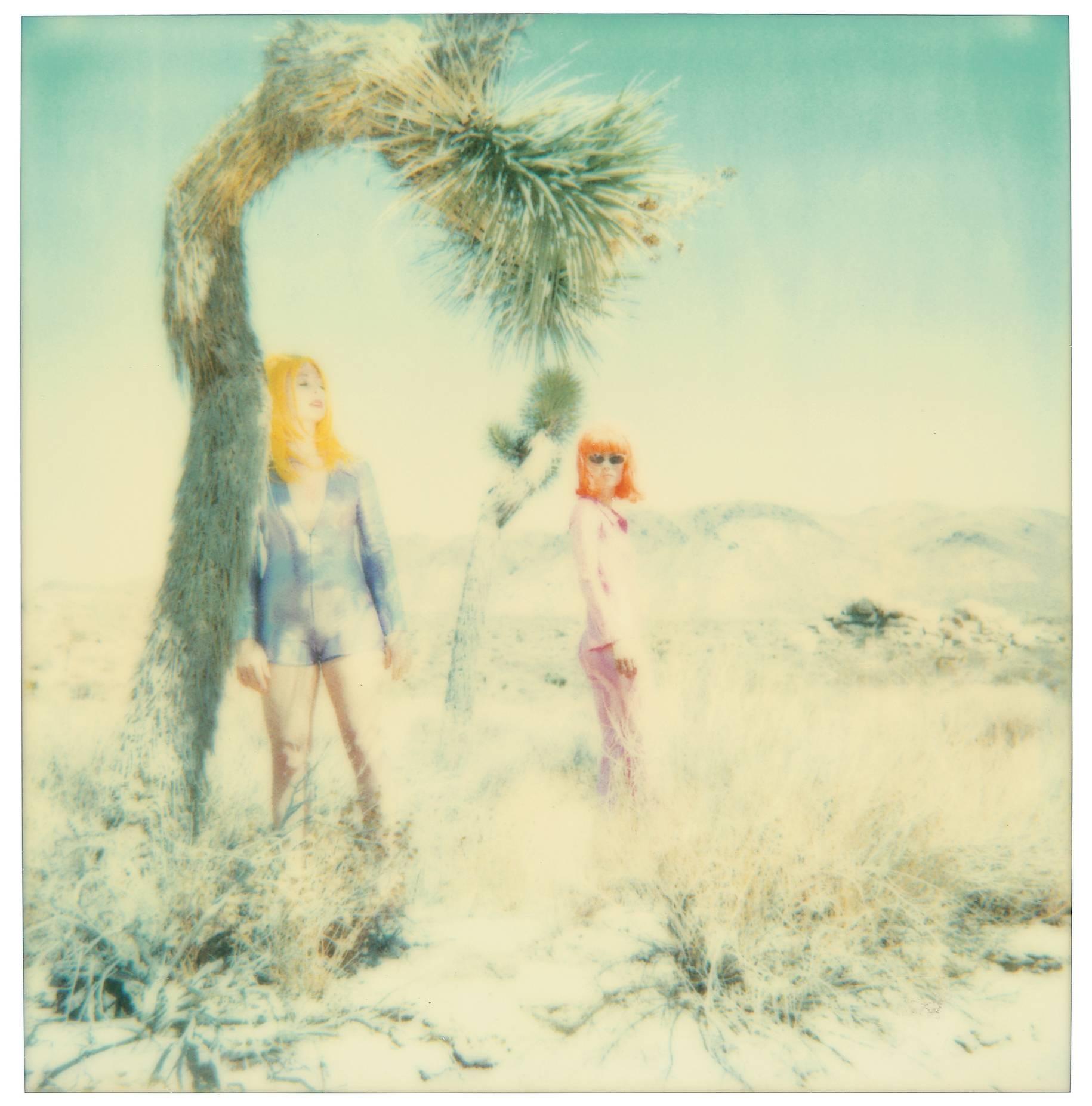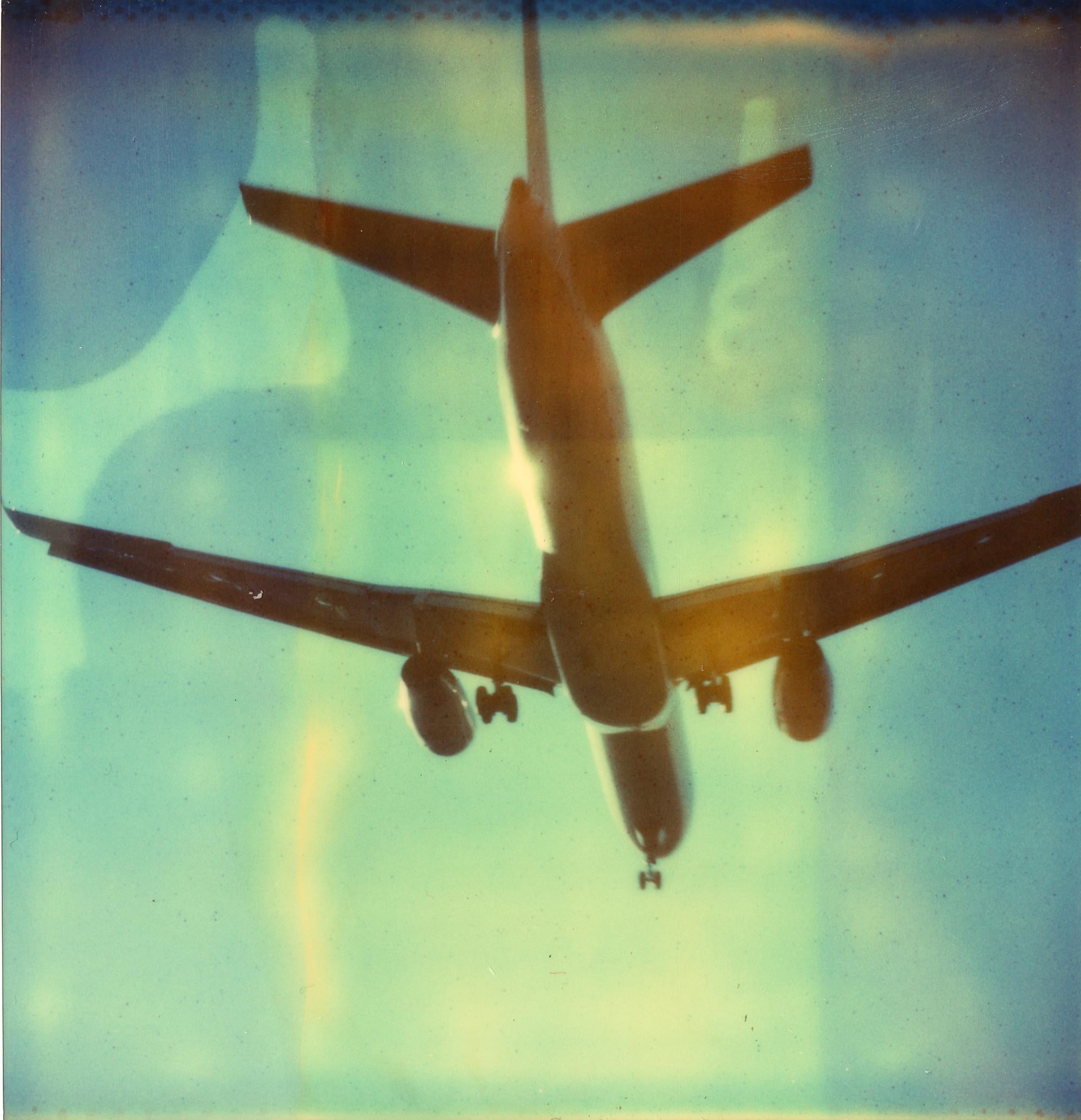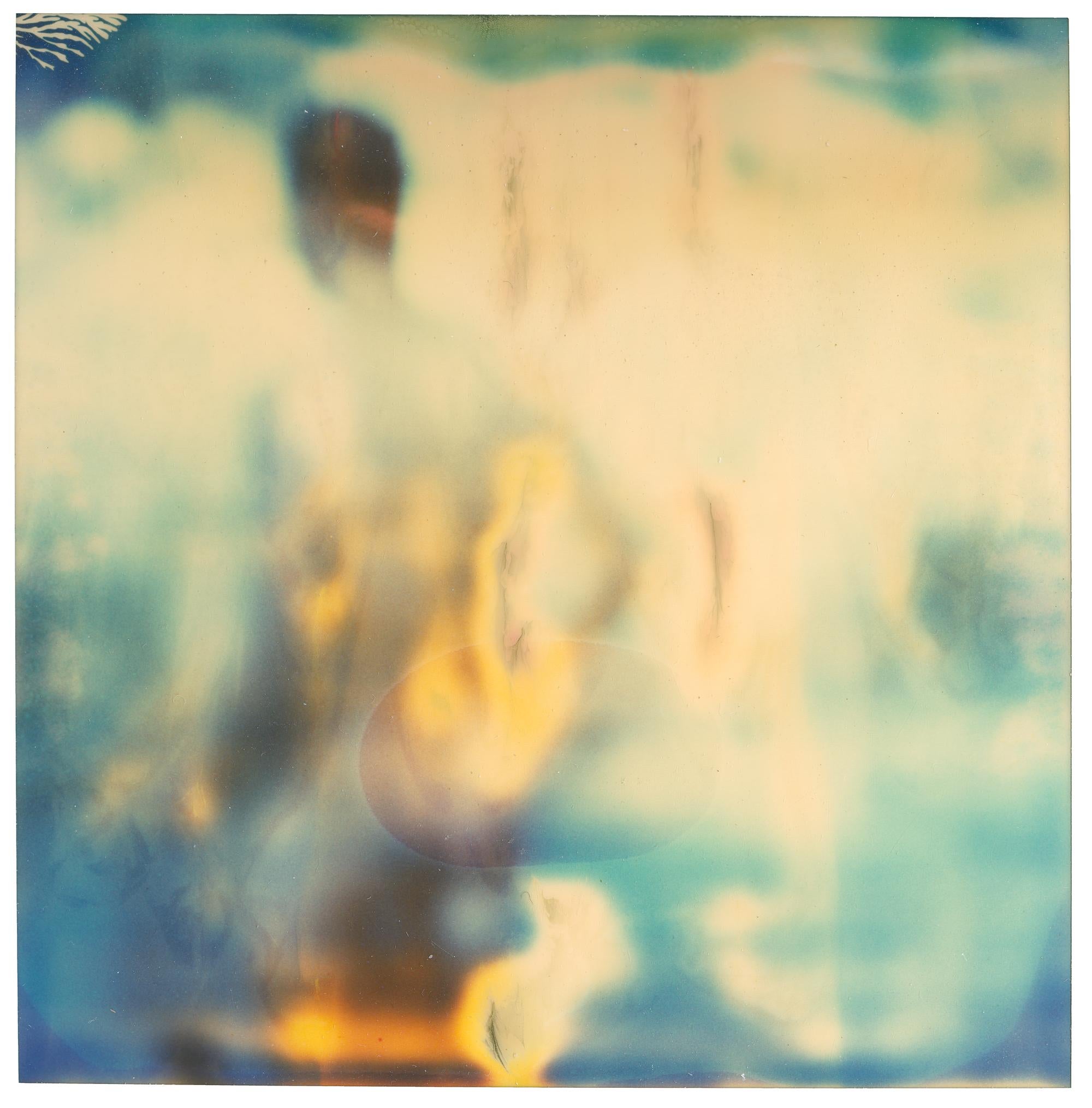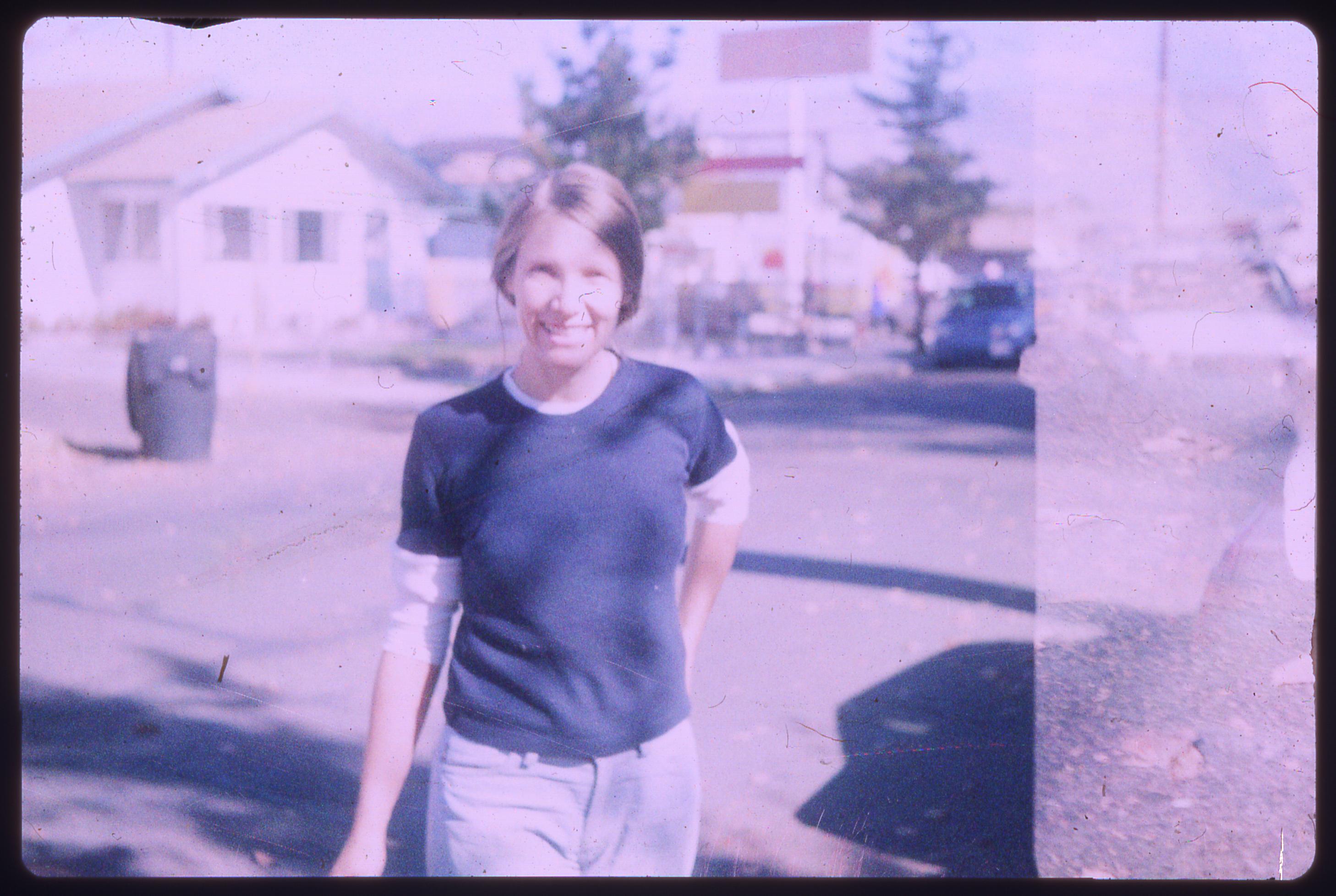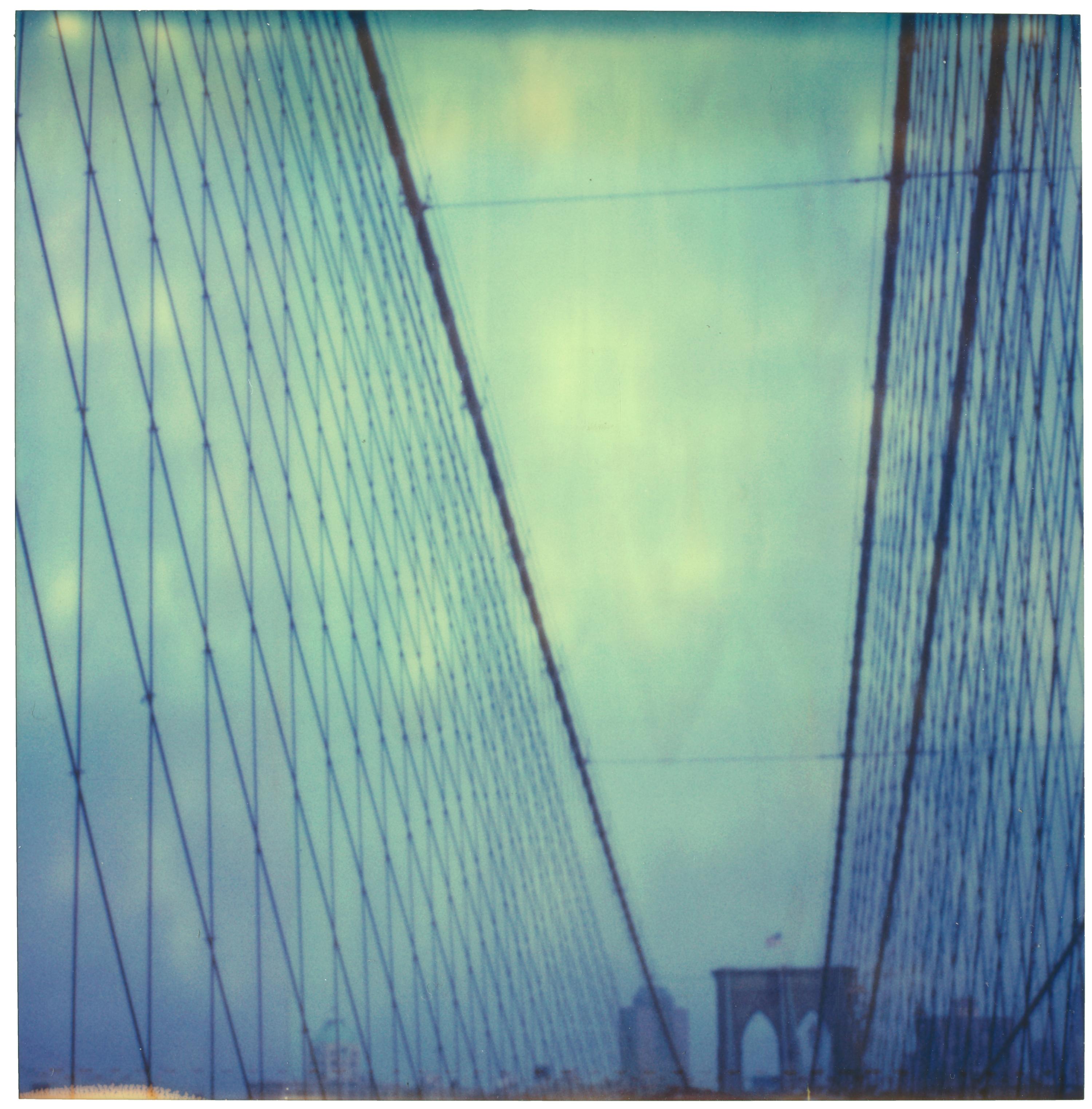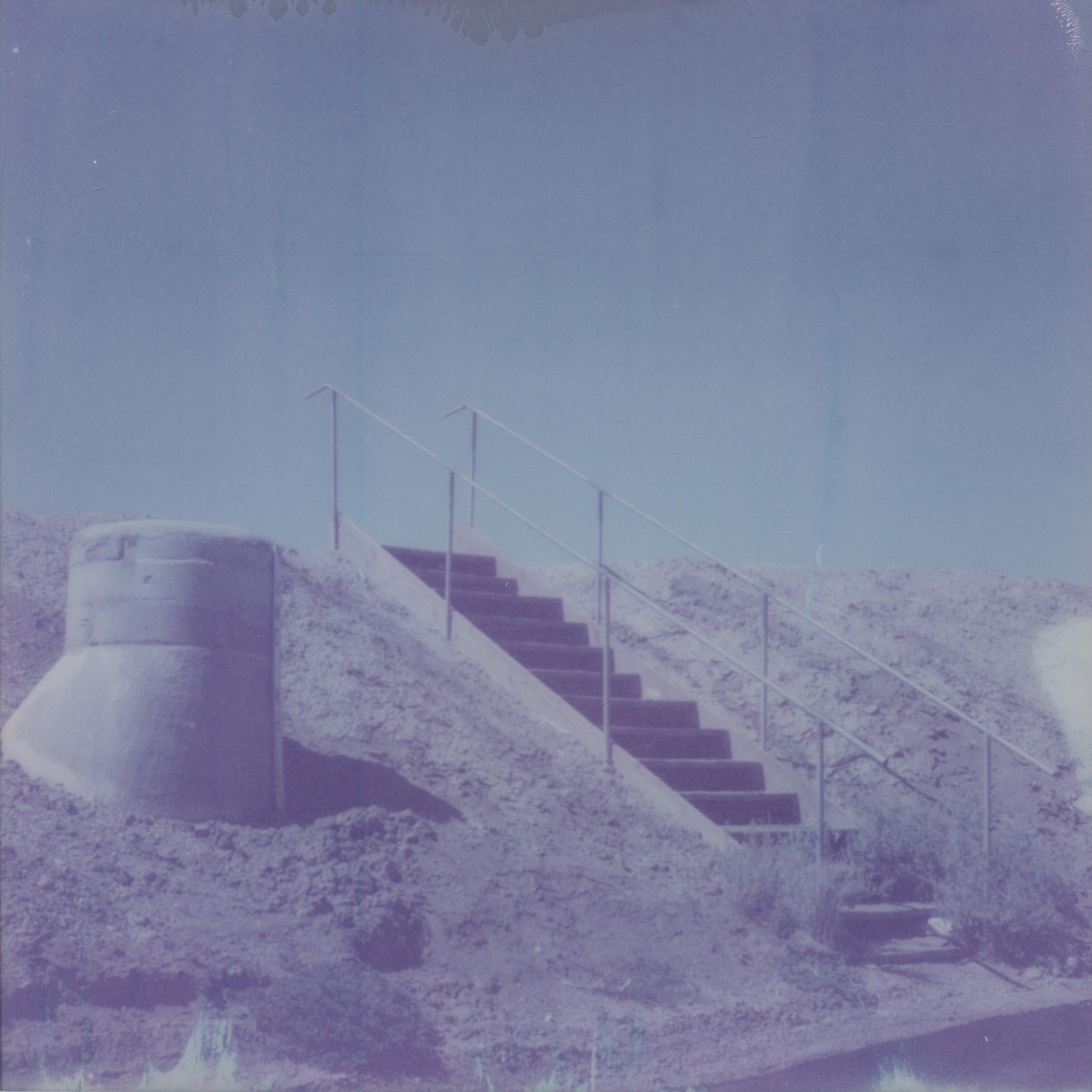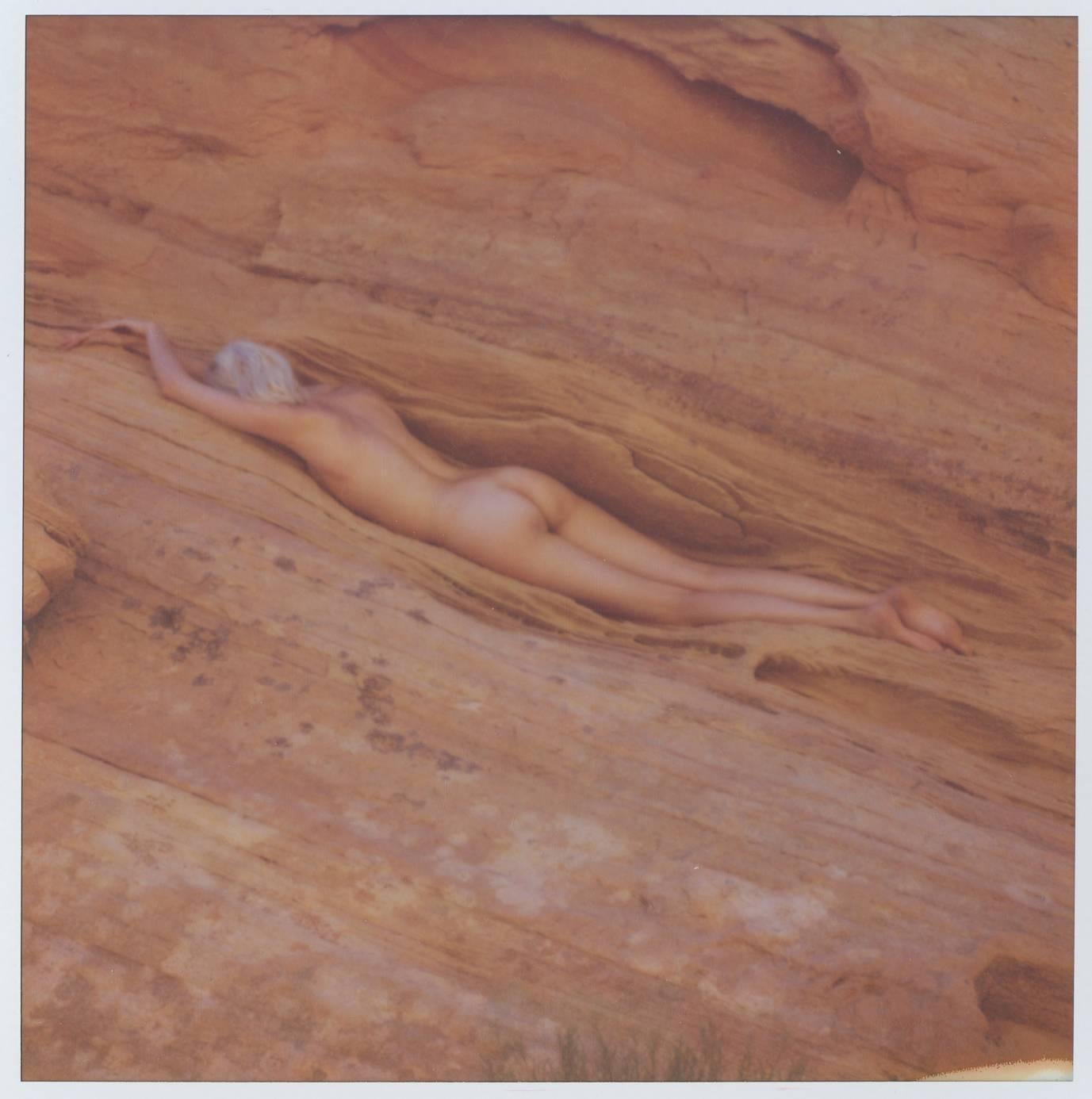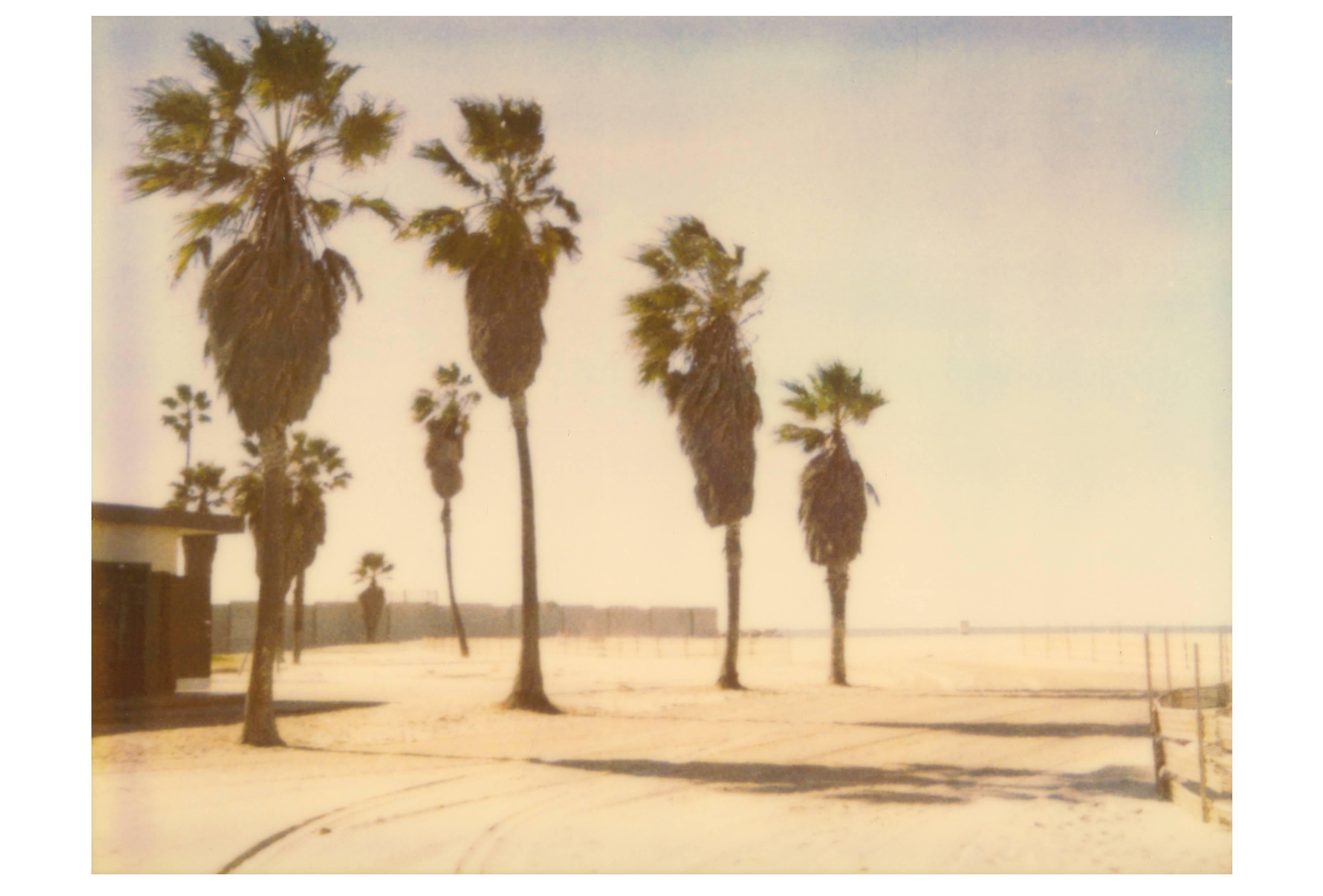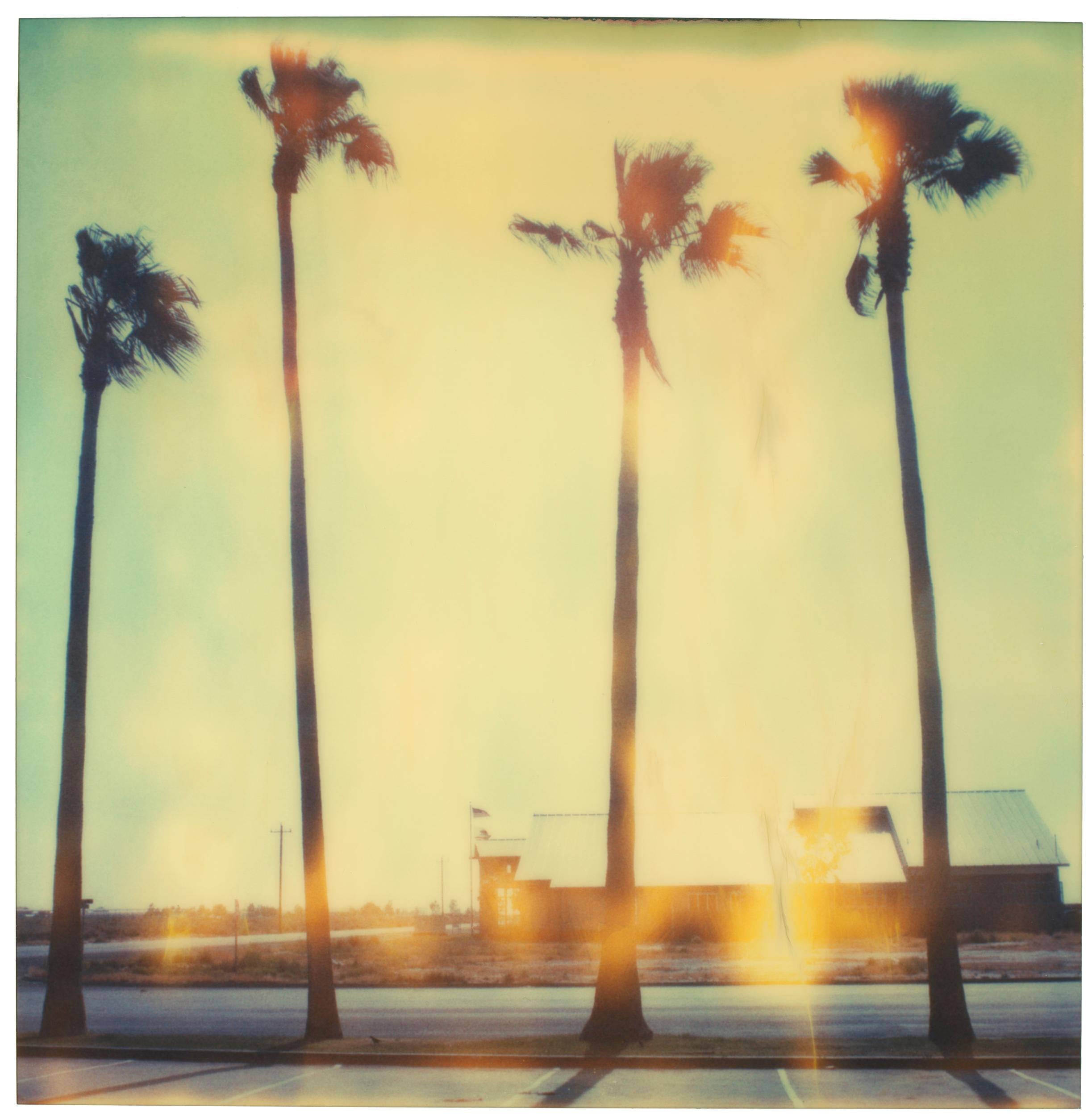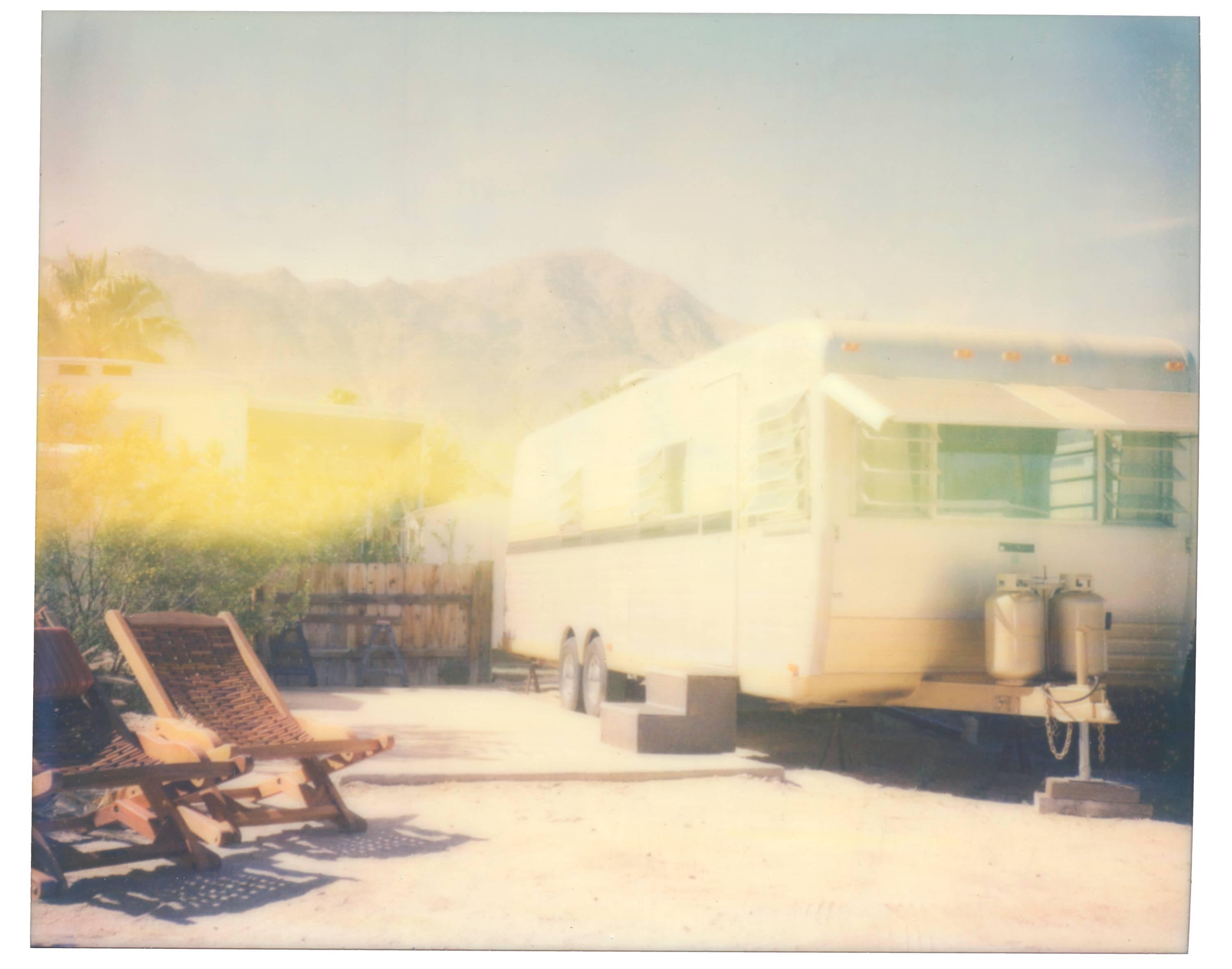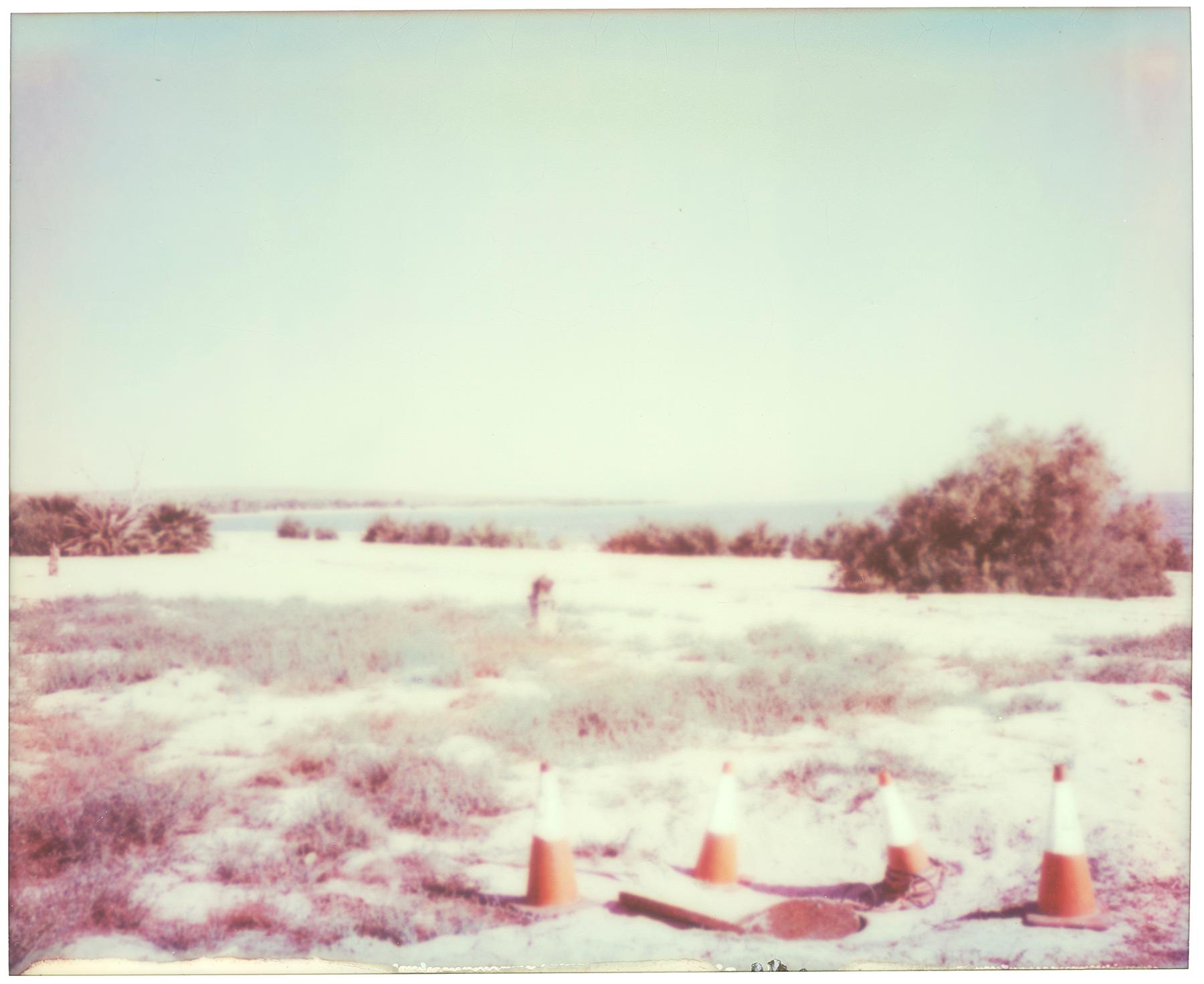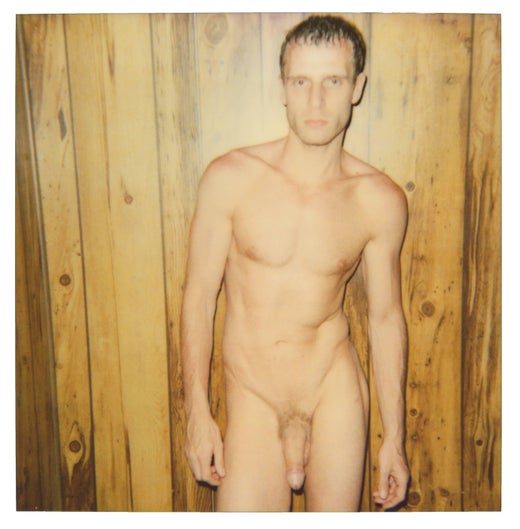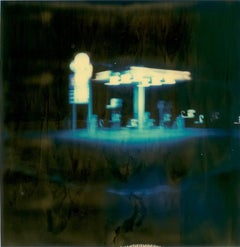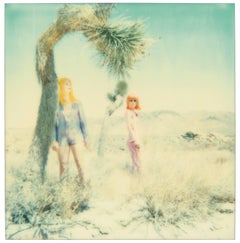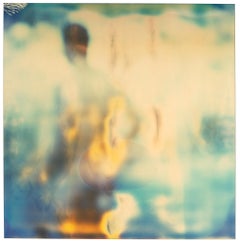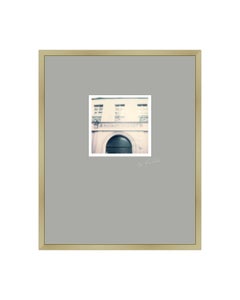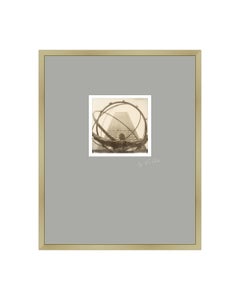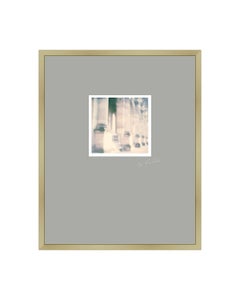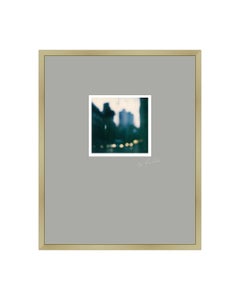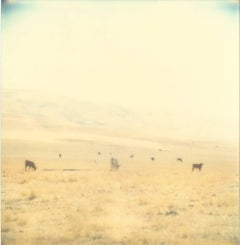
Untitled - Contemporary, 21st Century, Polaroid, Landscape Photography
View Similar Items
Want more images or videos?
Request additional images or videos from the seller
1 of 5
Stefanie SchneiderUntitled - Contemporary, 21st Century, Polaroid, Landscape Photography2004
2004
About the Item
- Creator:Stefanie Schneider (1968, German)
- Creation Year:2004
- Dimensions:Height: 23.63 in (60 cm)Width: 23.63 in (60 cm)
- Medium:
- Movement & Style:
- Period:
- Condition:Mint, new, perfect.
- Gallery Location:Morongo Valley, CA
- Reference Number:1stDibs: LU65233806932
Stefanie Schneider
Stefanie Schneider received her MFA in Communication Design at the Folkwang Schule Essen, Germany. Her work has been shown at the Museum for Photography, Braunschweig, Museum für Kommunikation, Berlin, the Institut für Neue Medien, Frankfurt, the Nassauischer Kunstverein, Wiesbaden, Kunstverein Bielefeld, Museum für Moderne Kunst Passau, Les Rencontres d'Arles, Foto -Triennale Esslingen., Bombay Beach Biennale 2018, 2019.
About the Seller
4.9
Platinum Seller
Premium sellers with a 4.7+ rating and 24-hour response times
Established in 1996
1stDibs seller since 2017
1,023 sales on 1stDibs
Typical response time: 2 hours
Authenticity Guarantee
In the unlikely event there’s an issue with an item’s authenticity, contact us within 1 year for a full refund. DetailsMoney-Back Guarantee
If your item is not as described, is damaged in transit, or does not arrive, contact us within 7 days for a full refund. Details24-Hour Cancellation
You have a 24-hour grace period in which to reconsider your purchase, with no questions asked.Vetted Professional Sellers
Our world-class sellers must adhere to strict standards for service and quality, maintaining the integrity of our listings.Price-Match Guarantee
If you find that a seller listed the same item for a lower price elsewhere, we’ll match it.Trusted Global Delivery
Our best-in-class carrier network provides specialized shipping options worldwide, including custom delivery.More From This Seller
View AllGasstation at Night I (Stranger than Paradise)
By Stefanie Schneider
Located in Morongo Valley, CA
Gas station at Night I (Stranger than Paradise) - 1999
38x36cm,
Edition of 30,
Archival C-Print, based on the Polaroid,
Certificate and Signature label.
Artist Inventory # 390, ...
Category
1990s Contemporary Landscape Photography
Materials
Archival Paper, Photographic Paper, C Print, Color, Polaroid
Long Way Home II, AP2/2, with Radha Mitchel and Max Sharam
By Stefanie Schneider
Located in Morongo Valley, CA
'Long Way Home II' by Stefanie Schneider
(Stranger than Paradise) - 1999
20x20cm,
sold out Edition of 10,
Artist Proof 2/2.(the last of the last in this edition)
Archival C-Print ...
Category
1990s Contemporary Color Photography
Materials
Photographic Paper, C Print, Color, Polaroid
Planes I
By Stefanie Schneider
Located in Morongo Valley, CA
Planes I - 2008
20x20cm,
Edition of 10, plus 2 Artist Proofs.
Archival C-Print, based on the Polaroid.
Signature label and Certificate.
Artist Inventory #4656.
Not mounted.
A...
Category
Early 2000s Contemporary Color Photography
Materials
Archival Paper, Photographic Paper, C Print, Color, Polaroid
Untitled (Paradise) - Contemporary, Nude, Polaroid
By Stefanie Schneider
Located in Morongo Valley, CA
Untitled (Paradise) - 1999,
20x20cm. Edition of 10, plus 2 Artist Proofs.
Archival C-Print, based on a Polaroid.
Signature label and Certificate.
Artist Inventory No. 20452.
Not mounted.
LIFE’S A DREAM
(The Personal World of Stefanie Schneider)
by Mark Gisbourne
Projection is a form of apparition that is characteristic of our human nature, for what we imagine almost invariably transcends the reality of what we live. And, an apparition, as the word suggests, is quite literally ‘an appearing’, for what we appear to imagine is largely shaped by the imagination of its appearance. If this sounds tautological then so be it. But the work of Stefanie Schneider is almost invariably about chance and apparition. And, it is through the means of photography, the most apparitional of image-based media, that her pictorial narratives or photo-novels are generated. Indeed, traditional photography (as distinct from new digital technology) is literally an ‘awaiting’ for an appearance to take place, in line with the imagined image as executed in the camera and later developed in the dark room. The fact that Schneider uses out-of-date Polaroid film stock to take her pictures only intensifies the sense of their apparitional contents when they are realised. The stability comes only at such time when the images are re-shot and developed in the studio, and thereby fixed or arrested temporarily in space and time.
The unpredictable and at times unstable film she adopts for her works also creates a sense of chance within the outcome that can be imagined or potentially envisaged by the artist Schneider. But this chance manifestation is a loosely controlled, or, better called existential sense of chance, that which becomes pre-disposed by the immediate circumstances of her life and the project she is undertaking at the time. Hence the choices she makes are largely open-ended choices, driven by a personal nature and disposition allowing for a second appearing of things whose eventual outcome remains undefined. And, it is the alliance of the chance-directed material apparition of Polaroid film, in turn explicitly allied to the experiences of her personal life circumstances, that provokes the potential to create Stefanie Schneider’s open-ended narratives. Therefore they are stories based on a degenerate set of conditions that are both material and human, with an inherent pessimism and a feeling for the sense of sublime ridicule being seemingly exposed. This in turn echoes and doubles the meaning of the verb ‘to expose’. To expose being embedded in the technical photographic process, just as much as it is in the narrative contents of Schneider’s photo-novel exposés. The former being the unstable point of departure, and the latter being the uncertain ends or meanings that are generated through the photographs doubled exposure.
The large number of speculative theories of apparition, literally read as that which appears, and/or creative visions in filmmaking and photography are self-evident, and need not detain us here. But from the earliest inception of photography artists have been concerned with manipulated and/or chance effects, be they directed towards deceiving the viewer, or the alchemical investigations pursued by someone like Sigmar Polke. None of these are the real concern of the artist-photographer Stefanie Schneider, however, but rather she is more interested with what the chance-directed appearances in her photographs portend. For Schneider’s works are concerned with the opaque and porous contents of human relations and events, the material means are largely the mechanism to achieving and exposing the ‘ridiculous sublime’ that has come increasingly to dominate the contemporary affect(s) of our world. The uncertain conditions of today’s struggles as people attempt to relate to each other - and to themselves - are made manifest throughout her work. And, that she does this against the backdrop of the so-called ‘American Dream’, of a purportedly advanced culture that is Modern America, makes them all the more incisive and critical as acts of photographic exposure.
From her earliest works of the late nineties one might be inclined to see her photographs as if they were a concerted attempt at an investigative or analytic serialisation, or, better still, a psychoanalytic dissection of the different and particular genres of American subculture. But this is to miss the point for the series though they have dates and subsequent publications remain in a certain sense unfinished. Schneider’s work has little or nothing to do with reportage as such, but with recording human culture in a state of fragmentation and slippage. And, if a photographer like Diane Arbus dealt specifically with the anomalous and peculiar that made up American suburban life, the work of Schneider touches upon the alienation of the commonplace. That is to say how the banal stereotypes of Western Americana have been emptied out, and claims as to any inherent meaning they formerly possessed have become strangely displaced. Her photographs constantly fathom the familiar, often closely connected to traditional American film genre, and make it completely unfamiliar. Of course Freud would have called this simply the unheimlich or uncanny. But here again Schneider almost never plays the role of the psychologist, or, for that matter, seeks to impart any specific meanings to the photographic contents of her images. The works possess an edited behavioural narrative (she has made choices), but there is never a sense of there being a clearly defined story. Indeed, the uncertainty of my reading here presented, acts as a caveat to the very condition that Schneider’s photographs provoke.
Invariably the settings of her pictorial narratives are the South West of the United States, most often the desert and its periphery in Southern California. The desert is a not easily identifiable space, with the suburban boundaries where habitation meets the desert even more so. There are certain sub-themes common to Schneider’s work, not least that of journeying, on the road, a feeling of wandering and itinerancy, or simply aimlessness. Alongside this subsidiary structural characters continually appear, the gas station, the automobile, the motel, the highway, the revolver, logos and signage, the wasteland, the isolated train track and the trailer. If these form a loosely defined structure into which human characters and events are cast, then Schneider always remains the fulcrum and mechanism of their exposure. Sometimes using actresses, friends, her sister, colleagues or lovers, Schneider stands by to watch the chance events as they unfold. And, this is even the case when she is a participant in front of camera of her photo-novels. It is the ability to wait and throw things open to chance and to unpredictable circumstances, that marks the development of her work over the last eight years. It is the means by which random occurrences take on such a telling sense of pregnancy in her work.
However, in terms of analogy the closest proximity to Schneider’s photographic work is that of film. For many of her titles derive directly from film, in photographic series like OK Corral (1999), Vegas (1999), Westworld (1999), Memorial Day (2001), Primary Colours (2001), Suburbia (2004), The Last Picture Show (2005), and in other examples. Her works also include particular images that are titled Zabriskie Point, a photograph of her sister in an orange wig. Indeed the tentative title for the present publication Stranger Than Paradise is taken from Jim Jarmusch’s film of the same title in 1984. Yet it would be dangerous to take this comparison too far, since her series 29 Palms (1999) presages the later title of a film that appeared only in 2002. What I am trying to say here is that film forms the nexus of American culture, and it is not so much that Schneider’s photographs make specific references to these films (though in some instances they do), but that in referencing them she accesses the same American culture that is being emptied out and scrutinised by her photo-novels. In short her pictorial narratives might be said to strip films of the stereotypical Hollywood tropes that many of them possess. Indeed, the films that have most inspired her are those that similarly deconstruct the same sentimental and increasingly tawdry ‘American Dream’ peddled by Hollywood. These include films like David Lynch’s Blue Velvet (1986), Wild at Heart (1990) The Lost Highway (1997), John Dahl’s The Last Seduction (1994) or films like Ridley Scott’s Thelma and Louise with all its girl-power Bonny and Clyde-type clichés. But they serve no more than as a backdrop, a type of generic tableau from which Schneider might take human and abstracted elements, for as commercial films they are not the product of mere chance and random occurrence. Notwithstanding this observation, it is also clear that the gender deconstructions that the characters in these films so often portray, namely the active role of women possessed of a free and autonomous sexuality (even victim turned vamp), frequently find resonances within the behavioural events taking place in Schneider’s photographs and DVD sequences; the same sense of sexual autonomy that Stefanie Schneider possesses and is personally committed to.
In the series 29 Palms (first begun in 1999) the two women characters Radha and Max act out a scenario that is both infantile and adolescent. Wearing brightly coloured fake wigs of yellow and orange, a parody of the blonde and the redhead, they are seemingly trailer park white trash possessing a sentimental and kitsch taste in clothes totally inappropriate to the locality. The fact that Schneider makes no judgment about this is an interesting adjunct. Indeed, the photographic projection of the images is such that the girls incline themselves to believe that they are both beautiful and desirous. However, unlike the predatory role of women in say Richard Prince’s photographs, which are simply a projection of a male fantasy onto women, Radha and Max are self-contained in their vacuous if empty trailer and motel world of the swimming pool, nail polish, and childish water pistols. Within the photographic sequence Schneider includes herself, and acts as a punctum of disruption. Why is she standing in front of an Officers’ Wives Club...
Category
Early 2000s Contemporary Nude Photography
Materials
Archival Paper, Photographic Paper, C Print, Color, Polaroid
My own private Travel Diary - Bishop, CA - Happy
By Stefanie Schneider
Located in Morongo Valley, CA
My own private Travel Diary - Bishop, CA - Happy - 2001
20x29cm,
Edition of 10, plus 2 Artist Proofs.
Archival C-Print, based on the Polaroid Slide.
Signature label and Certifi...
Category
1990s Contemporary Landscape Photography
Materials
Archival Paper, Photographic Paper, C Print, Color, Polaroid
Brooklyn Bridge (Stay) - Polaroid, 21st Century, Contemporary, Color
By Stefanie Schneider
Located in Morongo Valley, CA
Stefanie Schneider's work was used for Marc Forster's movie 'Stay'. Featuring Ewan McGregor, Naomi Watts and Ryan Gosling. Naomi and Ryan were both portraying artists and Stefanie's art was the art both created during the movie. Stefanie's images were also used for Ryan Gosling's memory sequence, for the end titles, for edits in between and as art paintings hanging in several scenes within the movie.
“I never remember the details of a Stefanie Schneider image, just the whole. She treads a third path between reality and dream that connects the two and truly sparks my artistic, visual freedom.” (Marc Forster)
This piece:
Brooklyn Bridge (Stay) - 2006
20x20cm, Edition of 10,
Archival C-Print, based on the Polaroid.
Signature label and Certificate.
Artist Inventory # 2172.
Not mounted.
Torsten Scheid, “Fotografie, Kunst, Kino. Revisited.”, FilmDienst 3/2006, page 11-13
Photography Art Cinema. Revisited
Stay expands a traditional connection through new facets
Interwoven between the media of photography and film is a veritable mesh-work of technical, motific, metaphorical and personal interrelationships. Extending from photo-film which, as in La Jetée by Chris Marker (France, 1962) is a montage of single, unmoving photographs all the way to the portrayal of photographic motifs in Hollywood cinema―most recently in Memento (USA, 2000) and One hour photo (USA, 2002)―is the range of filmic-photographic interactions on the one hand, and from the adaption of modes of cinematic production to the imitation of film stills on the other. For instance, with the legendary Untitled Film Stills (1978) of the American artist Cindy Sherman, who later made her debut as a film director with Office Killer (USA, 1997) and thereby, like many others, changed sides: Wim Wenders, Robert Frank and Larry Clark are doubtlessly the most successful of these photographic-filmic border crossers. This brief survey provides only a vague indication of the dimensions of this intermedial field, which in fact extends much further and is constantly being cultivated.
Also as a motif in film, photography has experienced a historical transformation: Photographers were once considered to be technicians who mastered a craft but never achieved the status of artists. Photographer-figures were caught in the allure of beautiful appearance, incapable of penetrating to the actual essence of things. Such depth was reserved for literature or painting. When photography in film touched upon the sphere of art, then most often as its contrasting model, as the metaphor for a superficial access to the world. Coming to mind are Fred Astaire as a singing fashion photographer in Stanley Donen’s musical film Funny Face (USA, 1957), or the restless lifestyle-photographer in Michelangelo Antonioni’s genre-classic Blow up (GB, 1966). For the doubting Thomas, only that exists which can be photographed. He ultimately enters the world of fantasy and thereby the field of art only unwillingly, when he becomes entangled in the world of his images. The last of his detail-enlargements shows only the photographic grain and has lost all connection to reality. The photograph looks as if it had been painted by Bill, the painter who is both friend and antagonist to the protagonist.
Photography as Art
It was first around the end of the last century that numerous filmmakers discovered photography as a genuine art form. In The Bridges of Madison County (USA, 1995) a sensitive Clint Eastwood stands, camera in hand, on the threshold of artistic status, and in Smoke (USA, 1994) a tobacco merchant ripens into a philosopher through his involvement in photography. Finally, in John Water’s parody of the art market, Pecker (USA, 1998), a provincial tom-fool is hyped into celebrated stardom amid the New York art scene because of his blurred snapshots. This film about a postmodern Kaspar Hauser in photographic art (with clear parallels to Richard Billingham...
Category
Early 2000s Contemporary Landscape Photography
Materials
Archival Paper, Photographic Paper, C Print, Color, Polaroid
You May Also Like
Paris Walks II - 21st Century Black & White Original Polaroid Photograph Framed
By Pia Clodi
Located in Zürich, CH
Paris Walks - Contemporary Black & White Polaroid Original Photograph Framed
Pia Clodi’s works encompass moments and mementos from her countless walks through cities as well as nat...
Category
2010s Contemporary Landscape Photography
Materials
Archival Paper, Photographic Paper, Polaroid
New York - Contemporary Black & White Landscape Polaroid Original Photograph
By Pia Clodi
Located in Zürich, CH
New York Minute - Black and White Original Polaroid Photograph
On a trip to New York, Pia Clodi did what she does best, she stopped, paused for a moment to take in the sights and mo...
Category
2010s Contemporary Black and White Photography
Materials
Photographic Film, Archival Paper, Photographic Paper, Polaroid
$536 Sale Price
20% Off
Paris Walks III - Contemporary Original Framed Landscape Polaroid Photograph
By Pia Clodi
Located in Zürich, CH
Paris Walks III - Contemporary Original Framed Landscape Polaroid Photograph
Pia Clodi’s works encompass moments and mementos from her countless walks through cities as well as nat...
Category
2010s Contemporary Landscape Photography
Materials
Archival Paper, Photographic Paper, Polaroid
Paris Walks I - Framed Contemporary Landscape Polaroid Original Photograph
By Pia Clodi
Located in Zürich, CH
Paris Walks - Contemporary Black & White Polaroid Original Photograph Framed
Pia Clodi’s works encompass moments and mementos from her countless walks through cities as well as nat...
Category
2010s Contemporary Landscape Photography
Materials
Archival Paper, Photographic Paper, Polaroid
New York IV - Contemporary Landscape Polaroid Original Photograph
By Pia Clodi
Located in Zürich, CH
New York IV - Framed Contemporary Polaroid Photograph
Like much of Pia Clodi's work, 'New York IV' leaves a trace of the fast, nomadic life she leads,. Here, a photograph of a hig...
Category
2010s Contemporary Landscape Photography
Materials
Archival Paper, Photographic Paper, Polaroid
$536 Sale Price
20% Off
New York V - Contemporary Landscape Polaroid Original Photograph Framed
By Pia Clodi
Located in Zürich, CH
New York V - Framed Contemporary Original Polaroid Photograph
Like much of Pia Clodi's work, 'New York V' leaves a trace of the fast, nomadic life she leads. This work is represen...
Category
2010s Contemporary Landscape Photography
Materials
Archival Paper, Photographic Paper, Polaroid
$224 Sale Price
66% Off
